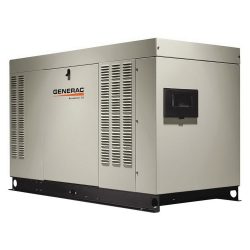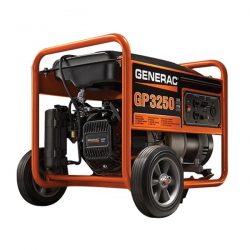
Generators are basic lifesavers at home and in work.
In cases of blackouts, emergencies, or prolonged power outages, generators may be the only way to power up essential appliances in your house and keep the work flow steady in the work site.

PORTABLE VERSUS STANDBY GENERATORS
Basically, there are two classifications of generators. They are useful for distinct purposes.
Portable generators run on combustion engines. They typically produce electricity using diesel fuel or gasoline. They come with a socket where you can plug your electrical items or wire into existing subpanels.
These types of lightweight gen sets are ideal when you aim to have access to electricity wherever you need it. You can take it to remote sites or use it as emergency source at home or on the road.
The downside to these handy units is limited power supply. You will only be able to turn lights on and power low voltage tools for a short span of time. In extreme cases, it can be used to keep a refrigerator or television running for a couple of hours at most.
Standby generators are large alternate electrical systems that come with automatic transfer switches. These spontaneously power up your devices when electricity from the main source is cut off. They are reliable for powering equipment essential for home life, business, and even public safety needs.
Standby sets are usually fixed to one location, or else take up a large amount of space and need massive transporters to move them. Financially, standby generators also require hefty initial outlays, transportation, and maintenance costs.
9 TYPES OF GENERATORS
1. Recreational Portable Generator
This portable unit runs on gasoline and utilize an inverter technology that keeps the engine hum at minimal. Quiet and lightweight, it is a favorite for RVs, camp sites, and other recreational use.
2. Residential Portable Generator
The residential generator is also designed for quieter short-term use. It can power medium-sized appliances in your home and yard such as pumps, electrical tools, freezers and furnaces.
3. Portable Industrial and Construction Generator
This can power standard construction and industrial tools that require 60 to 180 Hz. It is usually run by gasoline or diesel, reliable for maintaining work during unexpected power interruptions.
4. Mobile Generator
This model can provide up to 350 kW of power, mounted on containers or semi-trailers. This set is used to address massive needs for electricity in areas where there is no power supply, such as during disaster relief operations or off-grid construction.
5. Standard Standby Generator
The standard standby generator is a stationary system that can run on diesel, gasoline, or natural gas to provide up to 2200 kW for residential, commercial, and industrial spaces.
6. Power-Take Off Generator
PTO generators take power from a separate source like truck engine and transfer it to another machine or device. This is the generator type used frequently in ranches and farms.
7. Welder Generator
This is a specialized generator that provides integrated power supply source and welding tool. The combo makes welding activities possible in areas that are out of grid.
8. Vehicle-Mounted Generator
This is portable generator that is permanently mounted on the back of a truck. Unlike other handy types like recreational or residential generators, this is typically used for industrial applications.
9. Two-Bearing Generator
Like the PTO, this type transfers electricity to one device from a variety of sources. The pulley-system that directs the transfer marks the main difference for a two-bearing generator.
CHOOSE THE RIGHT TYPE
Access to a generator set or gen set may mean the difference between a heartbreaking disaster and survival. You can start making the right choice by understanding your current and future electricity needs.
Once you have that figured out, finding the suitable generator for your backup power supply becomes a manageable task.


